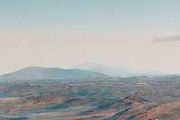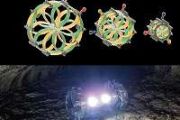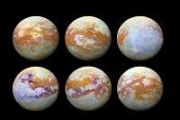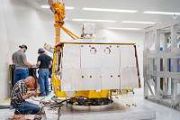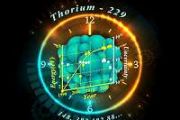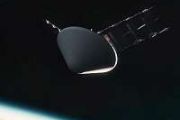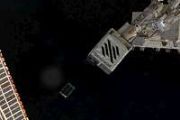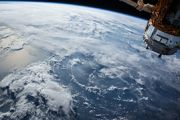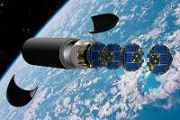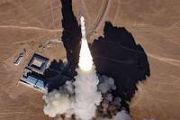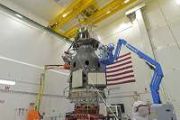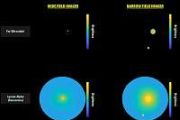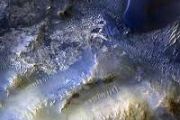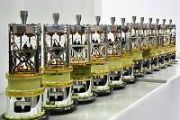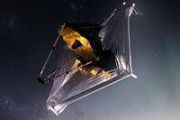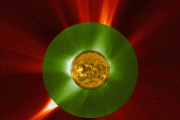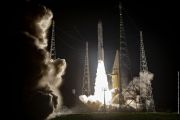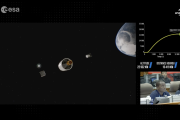
Copernical Team
EUSPA unveils integrated GNSS and secure SATCOM user technology update
 The European Union Agency for the Space Programme (EUSPA) has released the very first GNSS and Secure SATCOM User Technology Report, offering a unified resource that addresses two central space-based capabilities.
This new publication builds upon earlier GNSS User Technology and Secure SATCOM Market and User Technology studies, presenting an extensive review of the most recent innovations
The European Union Agency for the Space Programme (EUSPA) has released the very first GNSS and Secure SATCOM User Technology Report, offering a unified resource that addresses two central space-based capabilities.
This new publication builds upon earlier GNSS User Technology and Secure SATCOM Market and User Technology studies, presenting an extensive review of the most recent innovations NASA Pioneers Autonomous Tools for Satellite Swarms
 Coordinate your actions, unify your approach, and collaborate to fulfill a shared objective. This "pep talk" succinctly captures how NASA's latest swarm-based breakthrough operates. Known as Distributed Spacecraft Autonomy (DSA), it allows each satellite to make decisions independently while uniting with fellow spacecraft to pursue collective goals, all free from human oversight.
Within NA
Coordinate your actions, unify your approach, and collaborate to fulfill a shared objective. This "pep talk" succinctly captures how NASA's latest swarm-based breakthrough operates. Known as Distributed Spacecraft Autonomy (DSA), it allows each satellite to make decisions independently while uniting with fellow spacecraft to pursue collective goals, all free from human oversight.
Within NA Interaction of kinetic waves and suprathermal particles could be key to unlocking heliophysics mystery
 A graduate research assistant at The University of Alabama in Huntsville (UAH), a part of The University of Alabama system, has published a paper in the journal Astronomy and Physics that builds on an earlier study to help understand why the solar corona is so hot compared to the surface of the sun itself.
To shed further light on this age-old mystery, Syed Ayaz, a Ph.D. candidate in the U
A graduate research assistant at The University of Alabama in Huntsville (UAH), a part of The University of Alabama system, has published a paper in the journal Astronomy and Physics that builds on an earlier study to help understand why the solar corona is so hot compared to the surface of the sun itself.
To shed further light on this age-old mystery, Syed Ayaz, a Ph.D. candidate in the U Quantum hardware reveals cosmic bubble shifts
 Physicists have carried out an advanced simulation that they believe exposes fresh details about an elusive occurrence, potentially shaping the Universe's eventual destiny. The research centers on a concept called false vacuum decay, a scenario in which our Universe's apparent stability might be only temporary.
Originally proposed in quantum field theory around five decades ago, the idea s
Physicists have carried out an advanced simulation that they believe exposes fresh details about an elusive occurrence, potentially shaping the Universe's eventual destiny. The research centers on a concept called false vacuum decay, a scenario in which our Universe's apparent stability might be only temporary.
Originally proposed in quantum field theory around five decades ago, the idea s Europa Clipper Charts Course to Jupiter With First Stellar Snapshots
 Three months after lifting off from NASA's Kennedy Space Center in Florida, the Europa Clipper spacecraft still has 1.6 billion miles (2.6 billion kilometers) ahead before it settles into Jupiter's orbit in 2030. On arrival, it will capture detailed views of Europa's icy terrain. In the meantime, a pair of specialized cameras called star trackers is busy photographing deep space to confirm the c
Three months after lifting off from NASA's Kennedy Space Center in Florida, the Europa Clipper spacecraft still has 1.6 billion miles (2.6 billion kilometers) ahead before it settles into Jupiter's orbit in 2030. On arrival, it will capture detailed views of Europa's icy terrain. In the meantime, a pair of specialized cameras called star trackers is busy photographing deep space to confirm the c KAIST develops AI-driven performance prediction model to advance space electric propulsion technology
 Hall thrusters, an essential propulsion technology for space missions such as NASA's Psyche asteroid mission and SpaceX's Starlink satellites, operate using plasma to achieve efficient thrust. The research team at the Korea Advanced Institute of Science and Technology (KAIST) has developed an artificial intelligence (AI)-powered Hall thruster for CubeSats. This thruster will be integrated into t
Hall thrusters, an essential propulsion technology for space missions such as NASA's Psyche asteroid mission and SpaceX's Starlink satellites, operate using plasma to achieve efficient thrust. The research team at the Korea Advanced Institute of Science and Technology (KAIST) has developed an artificial intelligence (AI)-powered Hall thruster for CubeSats. This thruster will be integrated into t New Martian Crater Reveals Far-Reaching Seismic Signals
 By leveraging artificial intelligence, researchers have identified a newly formed crater on Mars, revealing that the impact event propelled vibrations deep into the planet's mantle.
Recent findings show that meteoroid impacts on Mars generate seismic waves that penetrate farther into the planet's interior than once believed. Two new studies illustrate this by matching quake data from NASA'
By leveraging artificial intelligence, researchers have identified a newly formed crater on Mars, revealing that the impact event propelled vibrations deep into the planet's mantle.
Recent findings show that meteoroid impacts on Mars generate seismic waves that penetrate farther into the planet's interior than once believed. Two new studies illustrate this by matching quake data from NASA' China readies Chang-e 7 for Lunar South Pole mission in search of water ice
 China's Chang'e 7 mission is on track for a 2026 launch, with its sights set on the moon's southern polar region. The goal, China Media Group reported Monday, is to identify water ice deposits and trial breakthrough technologies crucial for extended human operations on the lunar surface.
According to the report, the probe features a new hopper module equipped with a water molecule analyzer
China's Chang'e 7 mission is on track for a 2026 launch, with its sights set on the moon's southern polar region. The goal, China Media Group reported Monday, is to identify water ice deposits and trial breakthrough technologies crucial for extended human operations on the lunar surface.
According to the report, the probe features a new hopper module equipped with a water molecule analyzer Commercial and Military Uses of Cislunar Space
 Cislunar space, the region between Earth and the Moon, has emerged as a focal point for both commercial and military interests. Its strategic importance is underscored by the growing investments in space exploration, resource utilization, and defense capabilities. There are several potential commercial uses of cislunar space. One of the most promising of these is resource mining. The Moon is tho
Cislunar space, the region between Earth and the Moon, has emerged as a focal point for both commercial and military interests. Its strategic importance is underscored by the growing investments in space exploration, resource utilization, and defense capabilities. There are several potential commercial uses of cislunar space. One of the most promising of these is resource mining. The Moon is tho Rocket Lab and iQPS finalize arrangement for four Electron missions
 Rocket Lab USA, Inc. has secured an agreement with the Institute for Q-shu Pioneers of Space, Inc. (iQPS), a Japanese Earth observation company specializing in high-resolution imagery, to deliver four separate missions aboard the Electron launch vehicle.
Under the terms finalized in July 2024, the first three dedicated flights are set for 2025 from Rocket Lab Launch Complex 1 in New Zealan
Rocket Lab USA, Inc. has secured an agreement with the Institute for Q-shu Pioneers of Space, Inc. (iQPS), a Japanese Earth observation company specializing in high-resolution imagery, to deliver four separate missions aboard the Electron launch vehicle.
Under the terms finalized in July 2024, the first three dedicated flights are set for 2025 from Rocket Lab Launch Complex 1 in New Zealan 

